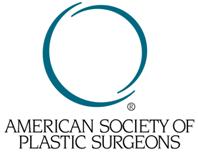Plastic Surgeon Qualifications
Posted On: March 08, 2018 Author: The Office of Dr. Stuart Linder Posted In: Home, Plastic Surgery
 It is vital that patients do as much due diligence on finding their plastic surgeon as possible. When considering body sculpting procedures, it is important that patients find a physician who is board certified with the American Board of Plastic Surgery. This doctor should be a Diplomate of the American Board of Plastic Surgery and may also be a member of the American Society of Plastic and Reconstructive Surgeons, as well as a Fellow of the American College of Surgeons. There is a circle logo that can be designated on the doctor’s card. This will also be identifiable by the Diploma by the American Society of Plastic and Reconstructive Surgeons as well as on the Worldwide Journal of Plastic and Reconstructive Surgery, also referred to as the “White Journal.” Look for that logo of the American Society of Plastic Surgeons when considering plastic surgery. Below are the rigorous standards that must be met to become a member of the American Society of Plastic and Reconstructive (ASPS).
It is vital that patients do as much due diligence on finding their plastic surgeon as possible. When considering body sculpting procedures, it is important that patients find a physician who is board certified with the American Board of Plastic Surgery. This doctor should be a Diplomate of the American Board of Plastic Surgery and may also be a member of the American Society of Plastic and Reconstructive Surgeons, as well as a Fellow of the American College of Surgeons. There is a circle logo that can be designated on the doctor’s card. This will also be identifiable by the Diploma by the American Society of Plastic and Reconstructive Surgeons as well as on the Worldwide Journal of Plastic and Reconstructive Surgery, also referred to as the “White Journal.” Look for that logo of the American Society of Plastic Surgeons when considering plastic surgery. Below are the rigorous standards that must be met to become a member of the American Society of Plastic and Reconstructive (ASPS).
- Board certification by the American Board of Plastic Surgery® (ABPS) or in Canada by The Royal College of Physicians and Surgeons of Canada®
- Complete at least six years of surgical training following medical school with a minimum of three years of plastic surgery residency training
- Pass comprehensive oral and written exams
- Graduate from an accredited medical school
- Complete continuing medical education, including patient safety each year
- Perform surgery in accredited, state-licensed or Medicare-certified surgical facilities
- Adheres to a strict Code of Ethics
To become a board-certified plastic surgeon requires many years of experience and many years of training. There are no substitutes and there are no quick weekend courses. The physician first must graduate from an accredited medical school in the United States of America, then proceed to a residency and surgical training a minimum of three years. These residencies often include general surgery training from three to seven years. Subsequently, fellowships in plastic and reconstructive surgery, either two or three years, can be obtained. Once those fellowships are finished, the surgeon will then sit for board certification. First, written boards, which the exam must be passed and finally oral board certification in which the surgeon will meet with several examiners to determine that they are qualified to perform the many scopes of plastic and reconstructive surgery. These scopes include hand surgery, facial reconstruction, cranial reconstruction, cosmetic surgery, body reconstruction, micro vascular surgery and hand surgery. Board-certified plastic and reconstructive surgeons are qualified, experienced, and have the judgment to understand problems that may arise from surgical procedures, as well as the blood supply and the anatomy that is vital in performing surgeries safely and reducing risk to the patients.
If you have any questions please feel free to call our Beverly Hills office at (310) 275-4513 or fill out our online contact form today.